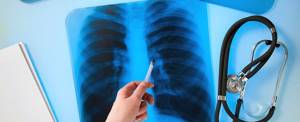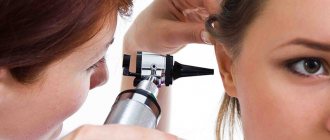A hematologist is a specialist who diagnoses and treats diseases of the blood, as well as the hematopoietic organs: red bone marrow, spleen, lymph nodes. Usually, a patient gets an appointment with a hematologist on a referral from a therapist or another doctor if suspicious symptoms or changes in blood tests persist for a long time.
Doctors call blood the internal environment of the body. It unites all organs and systems, supplies them with oxygen, nutrients, removes metabolic products, provides immune protection, transport of hormones and biologically active substances. About 5 liters of blood circulate in the adult body. Disturbances in hematological diseases affect all tissues.
History of the method's creation
The first fluorograph was invented at the very end of the 19th century by the greatest man J. Bleier, who played an important role in the fate of modern medicine. This scientist is the discoverer of fluorography. Over the last century, the design of the fluorescent apparatus has changed little. Undoubtedly, the device has acquired a number of changes, but the principle of operation has remained the same, almost the same as J. Bleier originally saw it.
Fluorography, like any x-ray examination, is based on the uneven passage of x-rays through human organs and tissues. As a result, due to their different densities, a specific picture of the internal organs is formed, which is then displayed on x-ray film. The resulting image allows us to judge the condition of the chest organs at the first stage.
Interpretation of fluorogram
Abnormalities can be detected on fluorography by a radiologist or a doctor, to whom the diagnostic result will be transmitted. The x-ray specialist notes all changes in the images and describes them in a fluorogram. In medicine, a fluorogram is an image of organs obtained as a result of exposure to x-rays printed on a CCD matrix.

Normally, the tissues of the lungs and heart have light, evenly colored shades. The following changes indicate pathologies:
- a single triangular darkening with a light rim - lung injury, foreign object or tumor;
- multiple triangular segmental darkening with a light outline - inflammation, tuberculosis, malignant tumor or metastases;
- lobar lightened spot - lung abscess;
- darkening with a diameter of up to 10 mm of a focal type - pathology of the coronary vessels, myocardial infarction;
- spots on the surface of the lungs in high focus - asthmatic foci, purulent pneumonia, accumulation of fluid in the pleura, helminthic infestations in the lungs.
A radiologist is required to take a fluorogram, and the final diagnosis is made by the specialist who referred the patient for examination. If abnormalities are detected during a routine examination, the final decision on the diagnosis is made by the pulmonologist.
Harmful effect on the body. Is it that big?
It is impossible to talk about the absolute harmlessness of FGL to the body. The benefits of this research method significantly outweigh all possible risks. Human exposure is minimal. There are practically no absolute contraindications to undergoing FGL.
If necessary, it can be performed even on children and pregnant women, without harm to the mother and fetus. In addition, modern digital fluorographs have a low radiation dose perceptible to the body, compared to analogue devices that have become a thing of history.
The radiation dose for one FGL on a digital device is so small and short-term that it is comparable to the radiation received from being in the sun for three days.
What changes in tests require a visit to a hematologist?
Being the internal environment of the body, blood reacts to almost any disease. Whatever complaints the patient turns to the doctor with, he can be sure that first of all he will be prescribed a general blood test. If changes persist in the analysis for a long time, the cause of which the therapist and other doctors cannot explain, the patient is referred to a hematologist:
- Anemia is a decrease in the level of red blood cells and hemoglobin.
- An abnormal increase (leukocytosis) or decrease (leukopenia) in the number of white blood cells.
- The appearance or increase in the number of uncharacteristic, immature cells.
- Changes in the leukocyte formula - percentages of different types of leukocytes.
- A decrease (thrombopenia) or an abnormal increase (thrombocytosis) in the platelet count.
- Reduced content of special substances - blood clotting factors.
Indications for fluorography
Every person should undergo fluorography at least once a year, regardless of health status.
This examination is carried out for preventive purposes even against the background of complete health and well-being.

Photo: https://pixabay.com/illustrations/female-doctor-healthcare-and-medicine-2828449/
The following situations are also mandatory indications for undergoing FGL:
- apparatus employed;
- conscription;
- living with babies in the same area;
- work in children's groups;
- work in food production;
- work in medical institutions.
The following persons are also subject to mandatory fluorographic examination:
- had contact with a patient with tuberculosis;
- with suspected HIV infection;
- without a fixed place of residence;
- from places of detention;
- with socially significant diseases.
Urgent FGL is carried out when:
- deterioration of health;
- suspected diseases of the chest organs;
- prolonged cough;
- hemoptysis, etc.
Before undergoing urgent fluorography, it is recommended to consult with your doctor.
There are no medical contraindications for FGL, except:
- the age of the child under 15 years of age (since monitoring of the epidemiological situation regarding pulmonary tuberculosis in children under 15 years of age is carried out using tuberculin diagnostics and diaskintest);
- the person’s serious condition does not allow horizontal installation of the patient in the fluorotherapy cabin;
- severe respiratory failure, in which the vertical position of the body is unacceptable.
What symptoms usually lead to a consultation with a hematologist?
Typically, patients are referred to hematologists if the following symptoms persist for a long time:
- Increased bleeding. It can manifest itself in different ways: in the form of frequent nosebleeds, the appearance of bruises on the skin for no apparent reason, slow cessation of bleeding from wounds, petechiae - numerous small hemorrhages on the skin.
- Prolonged increase in body temperature when the cause cannot be determined.
- Women's periods are too heavy.
- Pallor.
- Frequent numbness, tingling in the fingers and toes.
- Enlarged lymph nodes under the skin.
- Constant unexplained weakness, drowsiness, sweating.
Preparation before undergoing fluorography
This examination does not require special preparation. The only recommendation is to stop smoking in the next couple of hours before the procedure. In order to undergo fluoroexamination, it is enough to have a passport, a valid medical insurance policy or a referral from a doctor.
Then you should choose a clinic for the examination and follow the instructions of the radiologist. Typically this procedure takes no more than 5 minutes.

Photo: https://pixabay.com/photos/cigarettes-ash-tilt-smoking-83571/
Where to do fluorography?
FGL has established itself as a highly accessible and highly informative diagnostic method. There are many modern clinical centers that quickly and efficiently allow you to undergo fluorography of the lungs. Fluoroscopic examination can be done free of charge at the clinic at the place of residence and registration or upon referral from work, having a passport and a valid medical insurance policy.
Fluorography is universally available in such populous cities as St. Petersburg and Moscow, as well as in all other cities of Russia. The average price within the Russian Federation, depending on the location, varies from 800 to 1500 thousand Russian rubles. Almost every large medical clinical center has a fluorotherapy room, as doctors understand how important it is for modern diagnostics.
How often should fluorography be done?
The number of times this study is completed depends on several factors. Compulsory annual FGL is recommended for all citizens starting from the age of fifteen. But there are several categories of people who are recommended to have fluorography more than once a year.
These include persons:
- with a cured form of tuberculosis over the next three years;
- having close contact with tuberculosis patients;
- without a fixed place of residence;
- providing sexual services for commercial purposes;
- from places of imprisonment within the next two years;
- HIV-infected;
- those suffering from a number of chronic diseases, such as: bronchial asthma, chronic bronchitis, diabetes mellitus, gastric ulcer, chronic alcoholism, drug addiction;
- taking long-term hormonal therapy.

Unscheduled urgent fluorography is recommended in the following cases:
- if a person is suspected of having pulmonary tuberculosis;
- when a person is called up for military service;
- when living in the same area with a pregnant woman or newborn;
- when diagnosed with HIV infection for the first time in life.
X-ray of the lungs and fluorography - what is the difference?
At first glance, fluorography and chest x-ray are absolutely similar studies. Indeed, the principle of operation is quite similar and lies in the difference in the absorption of radioactive particles by body tissues. As a result, the overall picture appears in the picture. For example, the skeletal system retains the largest number of radioactive particles due to the high density of its structure. As a result, bone tissue appears as clearly as possible on film.
The main difference between fluorography and X-ray of the lungs is their purpose. FGL serves for mass preventive monitoring of public health. Due to the fact that an x-ray image has a much higher resolution, it can be enlarged to larger sizes, which means that a chest x-ray is often prescribed for diagnostic purposes.
Another difference between these methods is the difference in the radiation exposure to the body. With an X-ray of the lungs, it is two times lower than with fluorography, but the price of an X-ray examination of the lungs is 4-5 times higher than fluorography. This difference in cost is associated with the use of more expensive materials in radiography.
X-ray of the lungs does not replace fluorography and has its own indications for use.
According to generally accepted rules, if a pathological process is suspected during preventive fluorography, a chest x-ray is subsequently performed to detail the process and clarify the diagnosis by the attending physician.
Why is this procedure needed?
In the classic version, fluorography is performed to identify pathologies of any part of the body. However, in practice, this technique is used exclusively for detecting defective lesions in the chest area:
- spots on the lungs, indicating an inflammatory process, tissue destruction due to tuberculosis, malignant tumors, pneumonia;
- anomalies in the location of the heart and pathologies of the heart sac (pericardium);
- tumors, injuries, inflammation and purulent cavities in the mammary glands.
In the vast majority of cases, it is prescribed to check the lungs for dark spots. Preventing the spread of tuberculosis is the main reason why you need to undergo this procedure.
Good to know! Fluorography is most rarely used in the diagnosis of bone fractures in the thoracic region.
Doctors recommend undergoing fluorography as a screening examination, that is, to identify diseases in the absence of noticeable symptoms. It has been proven that this type of X-ray shows even small tuberculosis lesions, making it possible to make a correct diagnosis in the early stages of the disease.








